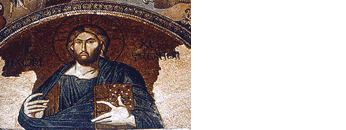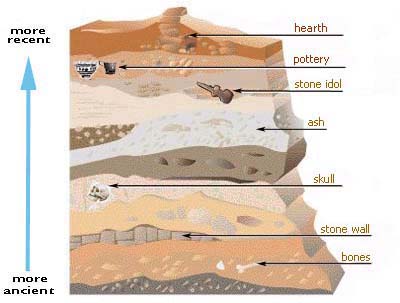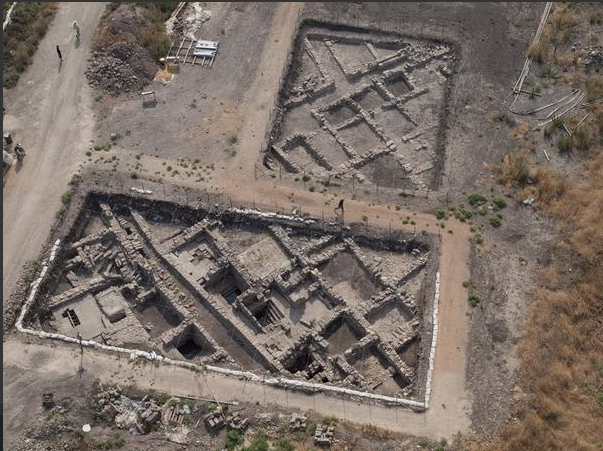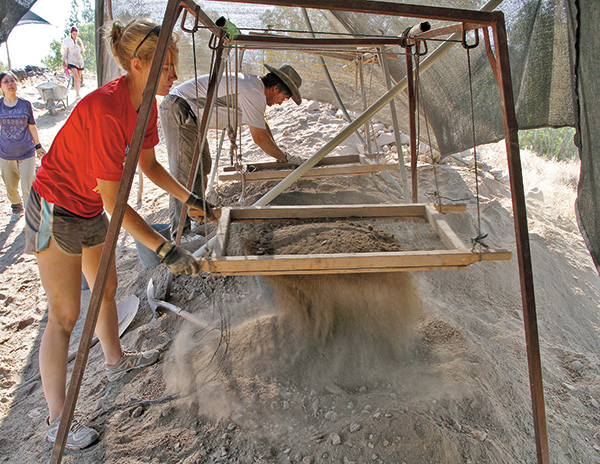
|
|
|
|
| Class
Prep |
|
|
|
How to Dig for Evidence: Literary & Archaeological Methods
 We'll be using today's class to recap the rules that are used to establish historical probability. Crossan and Reed's offer a nice image of what we're up to when they describe the layers of an archaeological dig or a text. In Excavating Jesus, they introduce you to the ten most important archaeological discoveries for reconstructing the world of Jesus, and the ten most important textual discoveries that illuminate early Judaism and Christianity.
We'll be using today's class to recap the rules that are used to establish historical probability. Crossan and Reed's offer a nice image of what we're up to when they describe the layers of an archaeological dig or a text. In Excavating Jesus, they introduce you to the ten most important archaeological discoveries for reconstructing the world of Jesus, and the ten most important textual discoveries that illuminate early Judaism and Christianity. -
-
 - After that, they introduce the notion of "layering" - that archaeological sites are really layers upon layers of habitation that have to be dug in a carefully controlled excavation in order to assign artifacts accurately to a time period (as at Magdala, to the left, and Bethsaida, below). Writing the layers accurately is called "stratigraphy" in archaeology, and Crossan and Reed offer two examples of bad stratigraphy; be able to identify one. Then they apply the notion of layering to the gospel texts, and discuss how form, source and redaction criticism expose different layers. We'll talk about each of these forms of "criticism" or "unlayering" in class. But be sure to note the final paragraph in their chapter, in which they warn you about two tendencies as layers get farther removed from the historical period or person you're studying.
-
- Next, turn to the Ehrman reading, as he does a nice job emphasizing some of the most important "rules" or criteria for "digging" a text down to its historical nucleus. Be able to define the three rules that he emphasizes, and to offer an example of each:
-
-
- Contextual credibility
- Multiple attestation
- Dissimilarity
-
- Next, read the excerpt from the Professor's book, focusing on the "roadblocks" to deriving historical evidence from our sources. She raises some concerns scholars have had about the criterion of dissimilarity (see pp. 38-9); be able to identify what they are. You'll also notice that she adds a few rules to Ehrman's list. Be sure to be able to define these as well:
-
-
- Eyewitness (or at least early) testimony
- Embarrassment/awkwardness
- Consistency of final portrait of Jesus with crucifixion
-
- A final rule not mentioned in any of the readings is:
-
-
- Orality or form
-
 We assume that Jesus spoke in a manner typical of rural preachers and teachers, which means that he likely used short, pithy and memorable statements or the catchy riddles embedded in parables (short stories he told). These tend to be regarded as more "likely" than long discourses that were developed—if not created—by the final gospel authors. We assume that Jesus spoke in a manner typical of rural preachers and teachers, which means that he likely used short, pithy and memorable statements or the catchy riddles embedded in parables (short stories he told). These tend to be regarded as more "likely" than long discourses that were developed—if not created—by the final gospel authors.-
- Rarely will all of these criteria be met by a saying or deed of Jesus, but the more are met by a passage, the better. Take the example of the baptism of Jesus, analyzed in HJFD (pp. 42-5). Be able to identify which of the criteria are satisfied by this event.
-
-
-
- Assigned Readings
-
-
| Secondary: |
Murphy, HJFD 33-46 (Camino); Crossan and Reed, Excavating Jesus 1-14; online class prep |
| Lecture Slides: |
Class 5a (pdf) |
-
-
-
-
|
|
|
|
|
